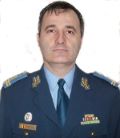ASPECTS REGARDING THE USE OF PASSIVE SENSORS ON AIR SURVEILLANCE MISSIONS
DOI:
https://doi.org/10.12753/2284-9378-20-02Abstract
Passive remote sensing is used to obtain information on objects and phenomena at land surface in order to get their well-defined objective image by means of special and temporal coordinates. Observing land surface represents an on-going activity for the scientific community which is directed towards the understanding of processes and phenomena on our planet as well as towards the monitoring of the impact of natural or human activity on the environment. Passive sensors have technical parameters that help them detect the phenomena and changes on land surface, ensuring the necessary data for the mapping and monitoring of biophysical and geological characteristics of the surface in order to understand the impact of human activity on ecosystems.
The military use of passive sensors is to create detailed maps of areas under surveillance, including the urban ones, to detect early threats, and to ensure the information support for the planning process as well as for the coordination and execution of precise strikes on objectives.
References
Irons James R., Dwyer L. John, Barsi A. Julia, The next Landsat satellite: The Landsat Data Continuity Mission, Remote Sensing of Environment, vol. 122, Publisher Elsevier, Amsterdam, 2012.
Mihai B., Teledetecţie-noţiuni generale, Department for distance learning, CREDIS Publishing House, Bucharest, 2008.
Moştoflei Constantin, Gheorghe Văduva, Tendinţe in lupta armată, National Defence University Publishing House, Bucharest, 2004.
Niţu Constantin, Niţu Călin Daniel, Tudose Corneliu-Eftimie, Mircea Cristian Vişan, Sisteme informaţionale geografice şi cartografie computerizată, University of Bucharest, Bucharest, 2002.
Dicţionarul explicativ al limbii române, Enciclopedical Universe Publishing House, Second Edition, Bucharest, 1998.
https://landsat.gsfc.nasa.gov/landsat-8/mission-details/
https://landsat.gsfc.nasa.gov/how_landsat_helps/
https://earth.esa.int/web/eoportal/satellite-missions/l/landsat-8-ldcm
https://landsat.gsfc.nasa.gov/tirs-design/

Downloads
Published
How to Cite
Issue
Section
License
The published articles are subject to copyright law. All rights are reserved to the “Carol I” National Defense University, regardless of whether all or part of the material are considered, especially the rights to translation, reprinting, re-use of illustrations, quotations, broadcasting through the media, reproduction on microfilms or any other way and storage in data banks. Any replicas without the associated fees are authorized provided the source is acknowledged.

 BULLETIN OF "CAROL I" NATIONAL DEFENCE UNIVERSITY
BULLETIN OF "CAROL I" NATIONAL DEFENCE UNIVERSITY 

